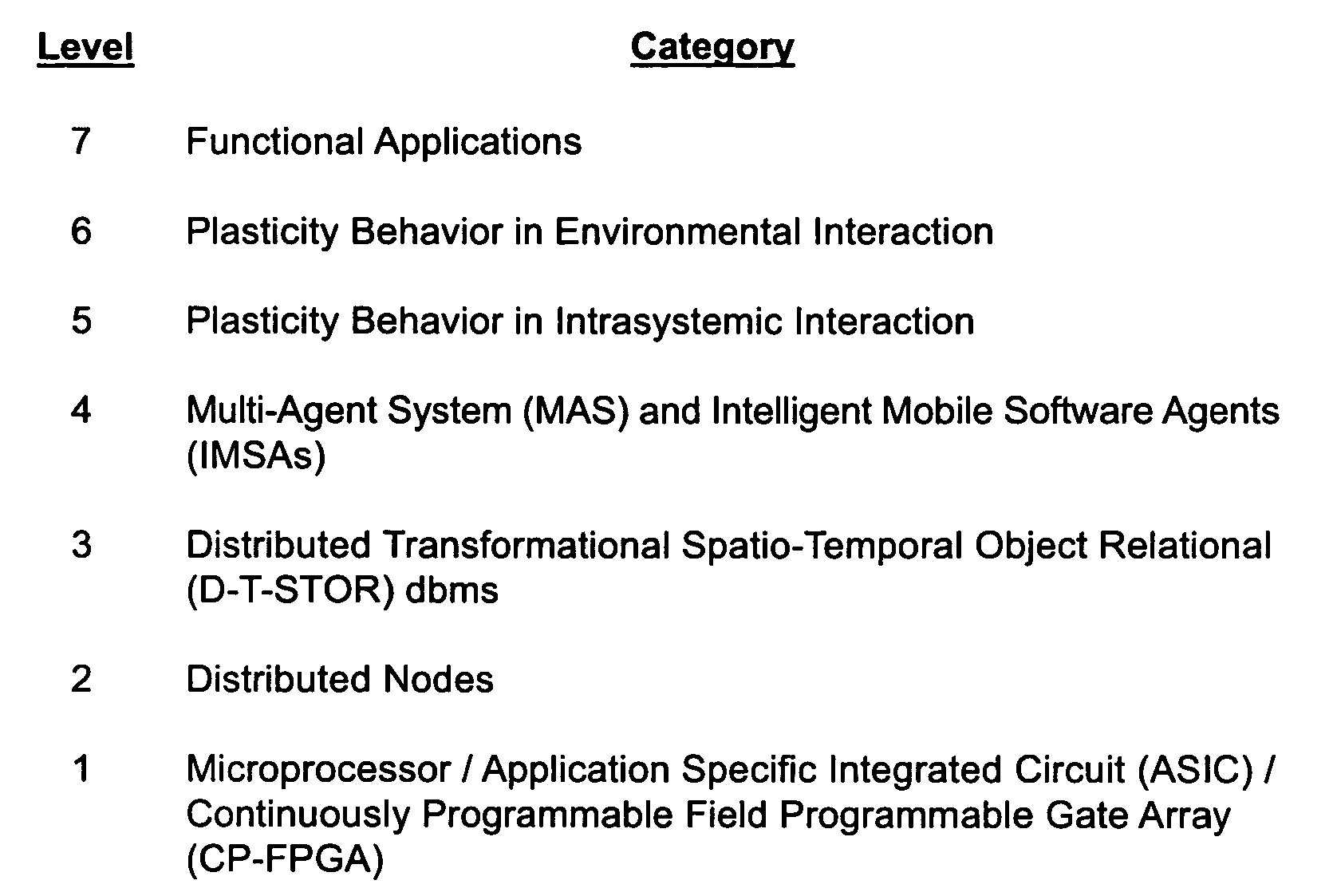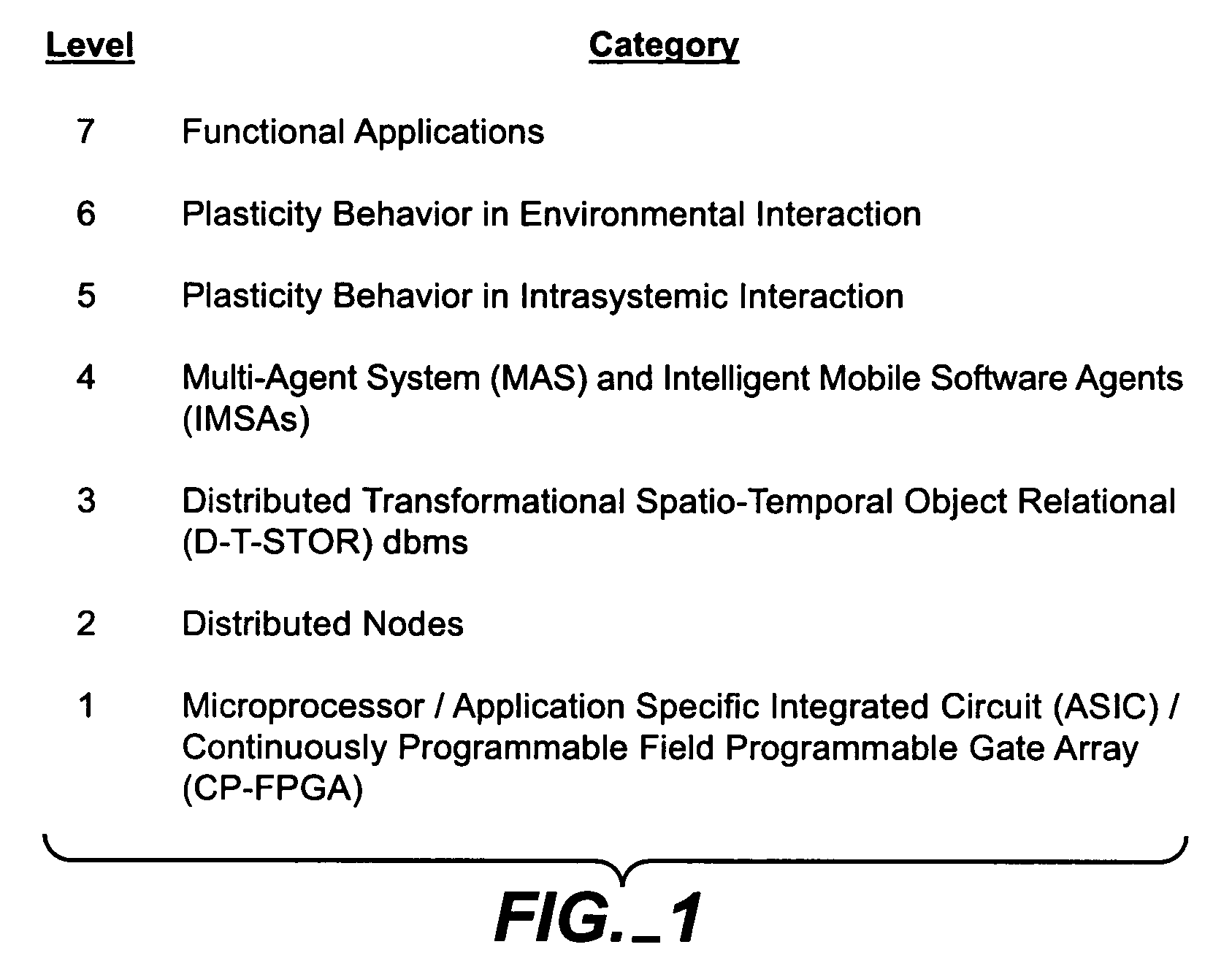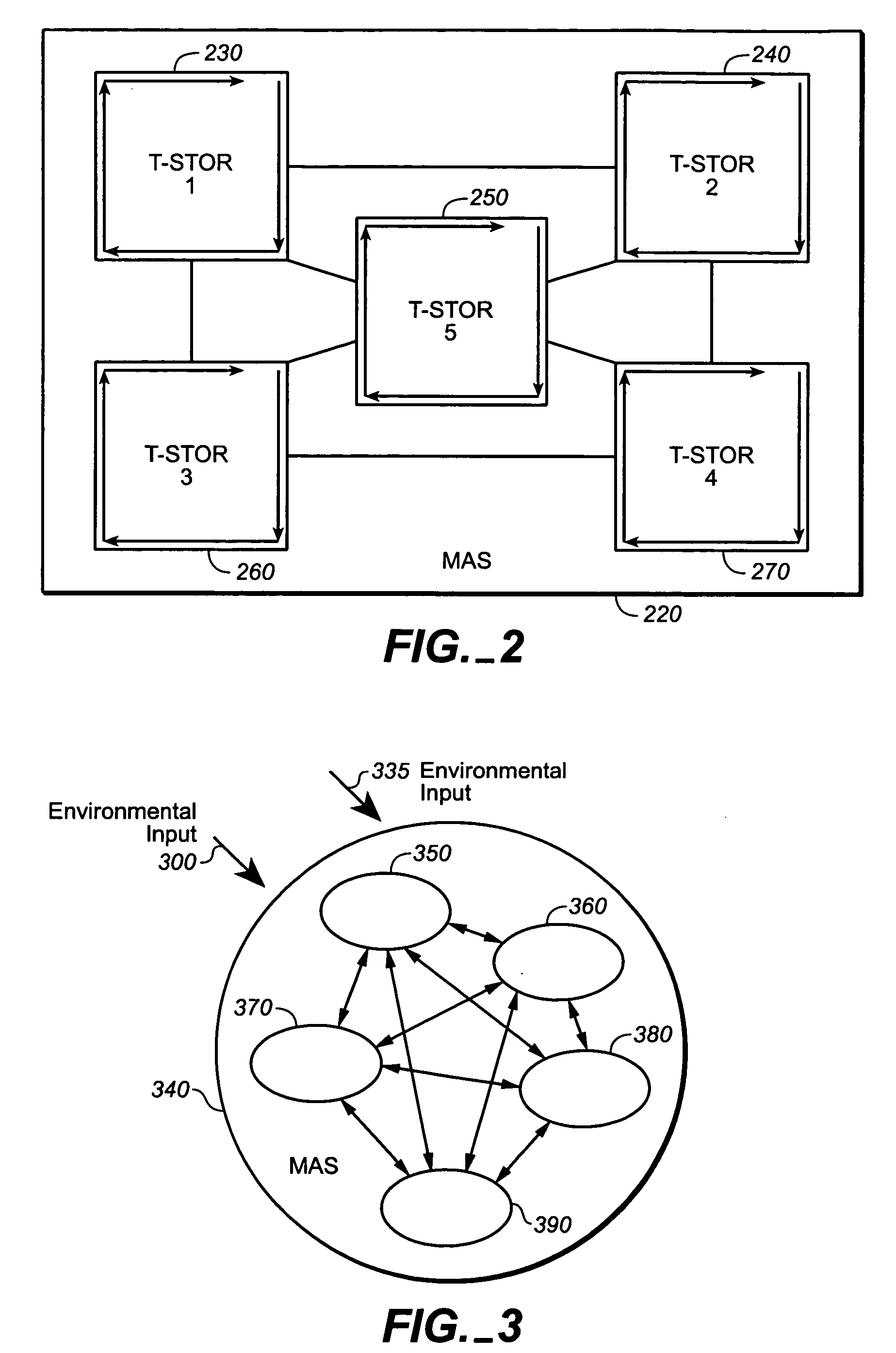Dynamic adaptive distributed computer system
a distributed computer system and dynamic technology, applied in the direction of digital computers, instruments, inference methods, etc., can solve the problems of relatively little progress involving management, control, automation and synthesis of complex aspects of very large scale dynamic systems, and the limit of this static model becomes obvious, so as to optimize adaptive self-organizing operations and maintain system dynamism and efficiency. , the effect of maximizing efficiency
- Summary
- Abstract
- Description
- Claims
- Application Information
AI Technical Summary
Benefits of technology
Problems solved by technology
Method used
Image
Examples
Embodiment Construction
[0054]Databases are a core component of computer systems that store, order and retrieve sets of data. They are the central instrument for the storage, search, analysis, organization and output of data sets and objects in computer systems. When they are linked, databases become a key part of decentralized computer networks that can optimally organize data for maximum benefit. Complex large dynamic distributed databases are like a riverbed in the sense that they represent the foundations for data as they are constantly input into the system over time, are analyzed and ordered, and are, finally, output. Dynamic distributed databases, because they input and output data, constantly adapt their structure to changing environmental inputs and the outputs that are required by specific applications. Dynamic distributed databases can be active and seek out data from various sources. Similarly, they can anticipate change, adapt and learn, and generate novel questions to which they provide answe...
PUM
 Login to View More
Login to View More Abstract
Description
Claims
Application Information
 Login to View More
Login to View More - R&D
- Intellectual Property
- Life Sciences
- Materials
- Tech Scout
- Unparalleled Data Quality
- Higher Quality Content
- 60% Fewer Hallucinations
Browse by: Latest US Patents, China's latest patents, Technical Efficacy Thesaurus, Application Domain, Technology Topic, Popular Technical Reports.
© 2025 PatSnap. All rights reserved.Legal|Privacy policy|Modern Slavery Act Transparency Statement|Sitemap|About US| Contact US: help@patsnap.com



